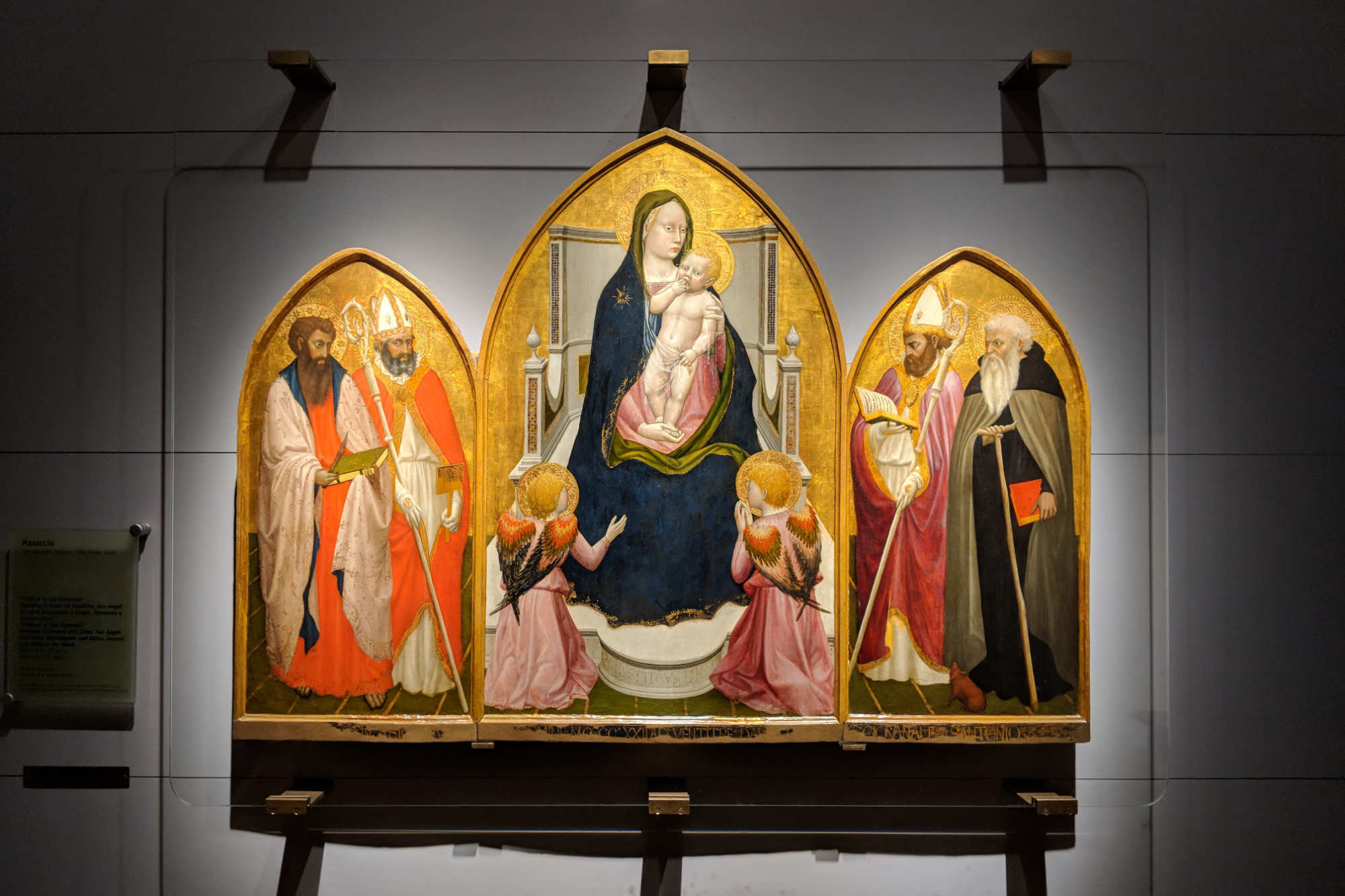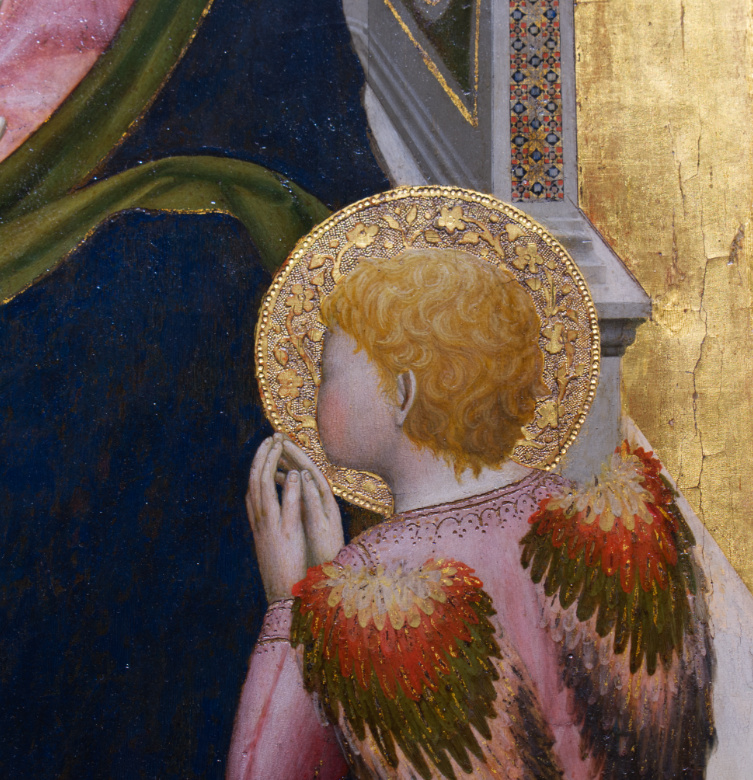
In the Triptych the central perspective is used for the first time in a painting.

The green floor is furrowed by orthogonal lines that converge at the Virgin’s neck, the vanishing point on which the construction of the three-dimensional space depends. The Madonna is seated on a monumental throne that develops in depth on the gold background and advances on the side panels. She holds her Son standing on her knees, adored by the two angels kneeling in foreshortening. The Child has two fingers in his mouth, probably made sugary by the grapes, the Eucharistic symbol, which he holds in his other hand.
On the left there are two martyr saints with the instruments of their martyrdom: St. Bartholomew the Apostle with the tanner’s knife and the Bible and St. Blaise, bishop of Sebaste in Armenia, with the crosier and the comb for carding wool.
On the right we find Saint Anthony the Abbot with a tau staff and a small pig, in his capacity as protector of animals, and Saint Juvenal, titular of the small church for which the Triptych was painted.
Saint Juvenal is reading Psalm 109,: the writing on the book is Masaccio’s, as confirmed by comparison with the painter’s only autograph and represents his signature on this masterpiece.

